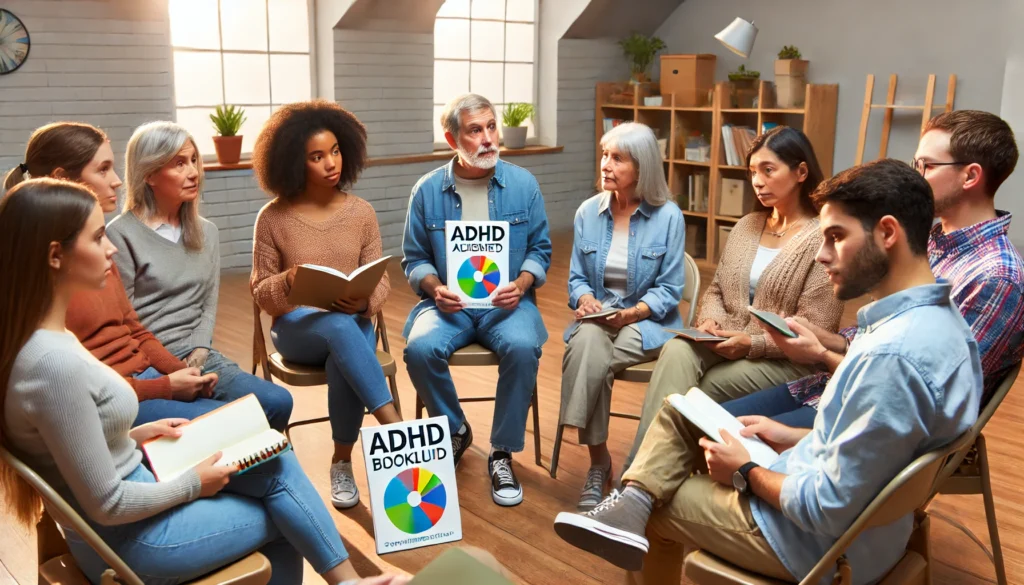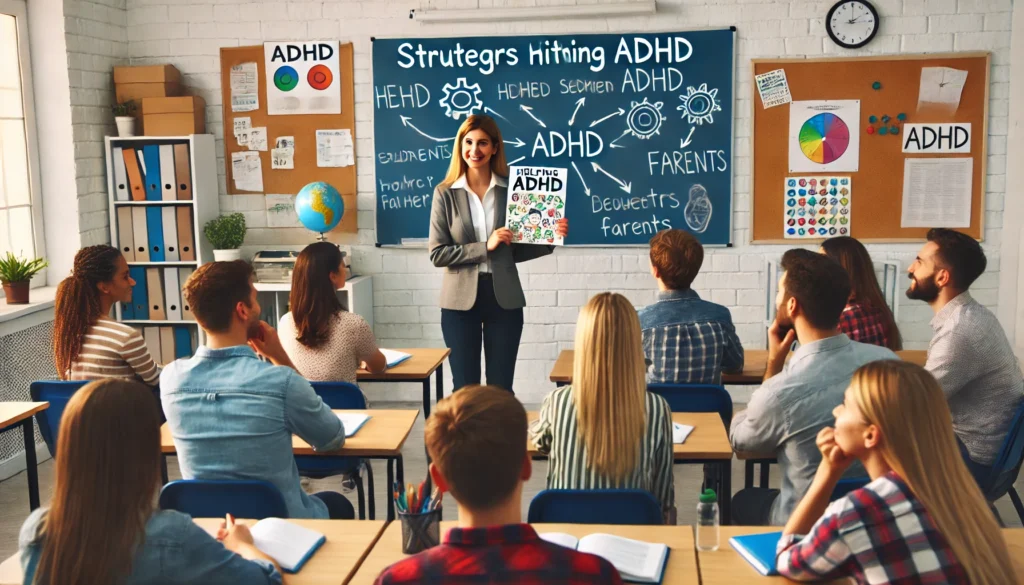ADHD is not a new phenomenon, though our understanding of it has evolved significantly over the years. Historically, children with ADHD were often mislabeled as “troublemakers” or “lazy,” but scientific advancements have led to a greater understanding of the neurological underpinnings of the condition.
You may also like: Enhancing Concentration: Strategies for ADHD
Historical Context
The first clinical descriptions of ADHD-like symptoms date back to the early 1900s, but it wasn’t until the latter half of the 20th century that ADHD was formally recognized as a distinct medical condition. This recognition marked a turning point in how children with these symptoms were diagnosed and treated. Early attempts at understanding these behaviors were largely punitive, focusing on discipline rather than support. However, as psychological research advanced, the focus shifted towards understanding ADHD as a legitimate neurodevelopmental disorder.
By the 1980s and 1990s, ADHD was included in the Diagnostic and Statistical Manual of Mental Disorders (DSM), leading to more standardized criteria for diagnosis. This inclusion helped in differentiating ADHD from other behavioral issues, allowing for more tailored and effective interventions. As awareness grew, advocacy groups began forming, pushing for better resources and understanding of ADHD within both educational and medical communities.
Current Trends in ADHD Research
Today, research into ADHD continues to expand, with scientists exploring the genetic, environmental, and neurobiological factors that contribute to the disorder. This research is crucial in developing more effective interventions and supports for individuals with ADHD. Studies have identified numerous genetic markers that may influence the likelihood of developing ADHD, highlighting the heritable nature of the condition. Additionally, research is examining the impact of prenatal exposure to certain substances and environmental factors that might exacerbate symptoms.
Neuroimaging studies have provided insights into the structural and functional differences in the brains of individuals with ADHD, particularly in areas associated with attention and impulse control. These findings are paving the way for novel therapeutic approaches, including neurofeedback and brain stimulation techniques. Moreover, researchers are investigating the role of diet and gut health in managing ADHD symptoms, with some studies suggesting that dietary modifications can have a significant impact on behavior and focus.
Social and Cultural Perceptions of ADHD
The understanding and perception of ADHD vary significantly across different cultures and societies. In some regions, ADHD is well-recognized and accommodated within educational systems, while in others, it may still be misunderstood or stigmatized. Cultural attitudes towards mental health can influence the willingness of families to seek diagnosis and treatment, impacting the support children receive. Education campaigns and international collaborations aim to bridge these gaps, promoting a more universal understanding of ADHD.
Media representation also plays a role in shaping public perception. Positive portrayals of individuals with ADHD who have achieved success can help challenge stereotypes and inspire hope. Conversely, misinformation or negative portrayals can perpetuate myths and hinder acceptance. It is crucial for ongoing dialogue and education to dispel misconceptions and foster a supportive environment for those with ADHD.

Strategies for Parents
Parenting a child with ADHD can be both rewarding and challenging. Here are some strategies to help parents support their children:
Establishing Routines
Children with ADHD often thrive in environments where they know what to expect. Establishing consistent daily routines can help reduce anxiety and improve focus. This includes setting regular times for homework, meals, and bedtime. Visual schedules can be particularly helpful, providing a tangible reference for the day’s activities. Allow for flexibility within routines to accommodate unexpected changes while maintaining overall structure.
Incorporating calming activities into the daily routine, such as reading time or a quiet hobby, can help children transition between more stimulating tasks and rest periods. Encourage children to take ownership of their routines by involving them in planning, which can enhance their sense of control and responsibility.
Positive Reinforcement
Positive reinforcement is a powerful tool in encouraging desired behaviors. Praise your child for small accomplishments and progress, rather than focusing solely on areas needing improvement. This can boost their self-esteem and motivate them to continue making strides. Use specific and descriptive praise to highlight what they did well, reinforcing the behavior you wish to see repeated.
In addition to verbal praise, consider using reward systems, such as sticker charts or points that can be exchanged for privileges. This tangible form of reinforcement can help children visualize their progress and understand the connection between their actions and rewards. Be consistent with reinforcement to establish clear expectations and maintain motivation.
Collaborate with Educators
Open communication with teachers and school staff is essential. Share your child’s strengths, challenges, and any successful strategies that have worked at home. This collaborative approach ensures that everyone is on the same page and working towards common goals. Schedule regular meetings to discuss your child’s progress and adjust strategies as needed.
Advocate for your child’s needs by becoming familiar with educational policies and available accommodations. Understanding your rights can help you navigate the school system effectively. Encourage a partnership mentality, where educators and parents work together to create a supportive learning environment.
Encourage Physical Activity
Physical activity can have a positive impact on attention and behavior. Encourage your child to participate in sports or activities they enjoy. Not only does this provide an outlet for their energy, but it also promotes overall well-being. Activities such as swimming, martial arts, or dance can improve coordination and self-discipline, which are beneficial for children with ADHD.
Incorporate short, frequent breaks for movement into daily routines, especially during periods of focused work or study. Even simple activities like a quick walk or stretching can help reset attention. Explore community programs or clubs that offer structured physical activities tailored to children’s interests and abilities.
Foster Emotional Intelligence
Helping your child develop emotional intelligence can be a valuable strategy in managing ADHD. Teach them to identify and express their emotions in healthy ways, using tools such as emotion charts or journals. Encourage open discussions about feelings and model effective coping strategies yourself.
Role-playing scenarios can help children practice responding to emotional situations, building confidence in their social interactions. Recognizing and validating their emotions fosters a sense of understanding and empathy, which is crucial for developing positive relationships and self-awareness.

Strategies for Educators
Educators play a vital role in supporting students with ADHD. Here are some strategies to create an ADHD-friendly classroom environment:
Differentiated Instruction
Recognize that students with ADHD may need different teaching approaches. Use a variety of instructional strategies to engage students and accommodate diverse learning styles. This might include visual aids, hands-on activities, or technology-assisted learning. Tailor assignments to allow for creativity and choice, giving students the opportunity to demonstrate understanding in ways that suit their strengths.
Incorporate cooperative learning opportunities, where students can work together in groups, fostering peer support and collaboration. This not only aids academic learning but also helps develop social skills. Continually assess and adjust teaching methods based on student feedback and performance to ensure they remain effective.
Structured Environment
A structured classroom environment can help students with ADHD focus better. Clearly define classroom rules and expectations, and maintain a consistent schedule. Use visual cues or timers to signal transitions between activities. Designate specific areas for different types of activities, such as reading corners or quiet zones, to help students associate spaces with certain behaviors.
Implement organizational systems, like color-coded folders or labeled bins, to assist students in managing materials and assignments. Regularly review and reinforce routines to help students internalize them, reducing anxiety and improving classroom management.
Break Tasks into Manageable Steps
Large tasks can be overwhelming for students with ADHD. Break assignments into smaller, more manageable steps, and provide clear instructions for each part. This helps students stay organized and focused on one task at a time. Use graphic organizers or checklists to visually outline steps, enabling students to track their progress and accomplishments.
Encourage students to set short-term goals and celebrate their achievements upon completion of each step. This not only enhances motivation but also builds confidence in their ability to tackle larger projects. Offer guidance and support as needed, gradually encouraging independence.
Encourage Self-Regulation
Teach students strategies for self-regulation, such as deep breathing, using a fidget tool, or taking short breaks to refocus. These techniques empower students to manage their attention and emotions independently. Introduce mindfulness exercises that can be integrated into the school day, promoting relaxation and concentration.
Create a classroom environment that supports self-regulation by allowing flexible seating options or quiet spaces for self-reflection. Encourage students to identify their triggers and develop personalized strategies for managing stress or distractions. Regularly practice self-regulation techniques as a class to normalize their use and reinforce their effectiveness.
Build a Supportive Classroom Community
Fostering a sense of community within the classroom can significantly benefit students with ADHD. Encourage inclusivity and understanding among peers by educating them about ADHD and promoting empathy. Implement classroom activities that celebrate diversity and cooperation, building a strong, supportive network.
Establish peer mentorship programs where students can learn from and support each other, fostering positive social interactions and reducing feelings of isolation. Create an atmosphere of respect and kindness, where students feel safe to express themselves and seek help when needed.

Future Implications of ADHD Research
As research on ADHD continues to evolve, new insights and interventions are on the horizon. Scientists are exploring novel treatments, including neurofeedback, dietary interventions, and digital therapeutics, which show promise in managing ADHD symptoms.
Personalized Medicine
Advancements in personalized medicine may lead to more targeted interventions for individuals with ADHD. By understanding the unique genetic and neurobiological profiles of each person, treatments can be tailored to their specific needs, potentially improving outcomes. Genetic testing might help identify the most effective medications or therapies for each individual, minimizing trial and error in treatment plans.
Precision medicine approaches can also consider lifestyle factors, such as diet, exercise, and sleep patterns, to create comprehensive management plans. This holistic view aims to address the multifaceted nature of ADHD, improving overall quality of life and symptom management.
Technology and ADHD
Technology is playing an increasingly significant role in ADHD management. Apps and digital tools designed to improve organization, time management, and focus are becoming more prevalent, offering new avenues for support. Virtual reality and gamified learning environments provide engaging ways to practice attention and executive function skills.
Telehealth services are expanding access to ADHD specialists, allowing for remote consultations and ongoing support. These technological advancements can facilitate continuous monitoring and adjustment of treatment plans, ensuring they remain effective over time.
Societal Impact of ADHD Research
The ongoing research into ADHD is influencing societal perceptions and policies surrounding the condition. Increased understanding of ADHD’s neurological basis is helping reduce stigma and promote acceptance. Public health initiatives are working to improve awareness and access to resources, particularly in underserved communities.
Educational systems are being encouraged to adopt more inclusive practices, integrating ADHD-friendly strategies into mainstream classrooms. These changes aim to create environments where all students, regardless of their needs, can thrive and reach their full potential.
Conclusion
ADHD is a complex condition, but with the right strategies and support, children with ADHD can thrive in both educational and home settings. By understanding the historical context, current research trends, and future implications, parents and educators can better navigate the challenges of ADHD.
This booklet aims to be a valuable resource, providing practical strategies grounded in scientific research. By implementing these strategies and staying informed about ongoing research, we can create an inclusive and supportive environment for children with ADHD.
In conclusion, whether you are a parent, educator, or someone seeking to understand ADHD better, this guide offers a comprehensive overview of ADHD strategies. With continued research and collaborative efforts, we can improve the quality of life for those affected by ADHD and foster their potential in meaningful ways. As we move forward, embracing innovation and inclusivity will be key to unlocking opportunities for individuals with ADHD, allowing them to contribute to society in diverse and impactful ways.
Further Reading:
The ADHD Healthy Habits Handbook
Important Note: The information contained in this article is for general informational purposes only, and should not be construed as health or medical advice, nor is it intended to diagnose, prevent, treat, or cure any disease or health condition. Before embarking on any diet, fitness regimen, or program of nutritional supplementation, it is advisable to consult your healthcare professional in order to determine its safety and probable efficacy in terms of your individual state of health.
Regarding Nutritional Supplements Or Other Non-Prescription Health Products: If any nutritional supplements or other non-prescription health products are mentioned in the foregoing article, any claims or statements made about them have not been evaluated by the U.S. Food and Drug Administration, and such nutritional supplements or other health products are not intended to diagnose, treat, cure, or prevent any disease.


